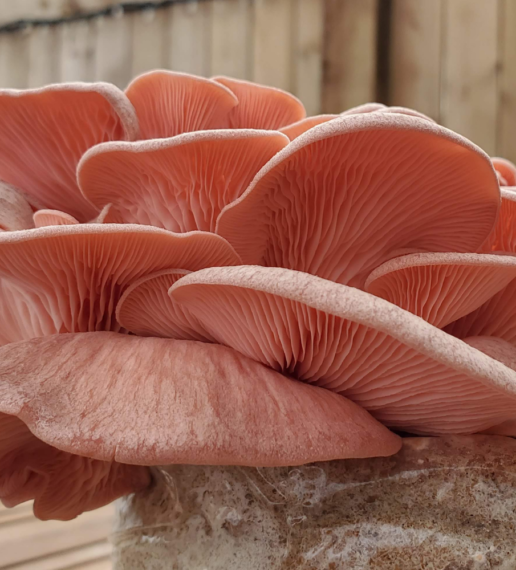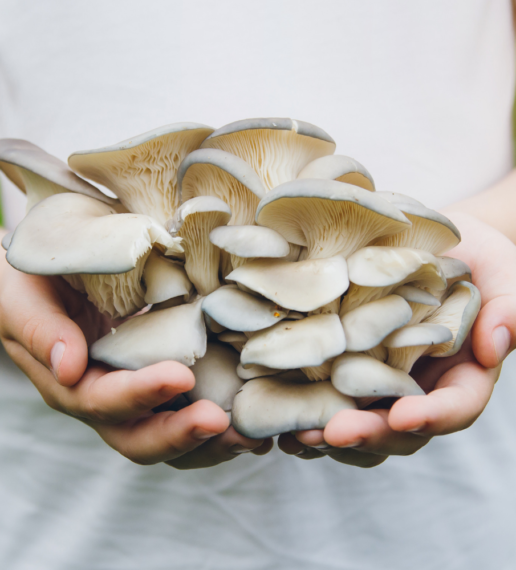Growing Blog
How Big Does Reishi Grow? The Story Of The Big Reishi
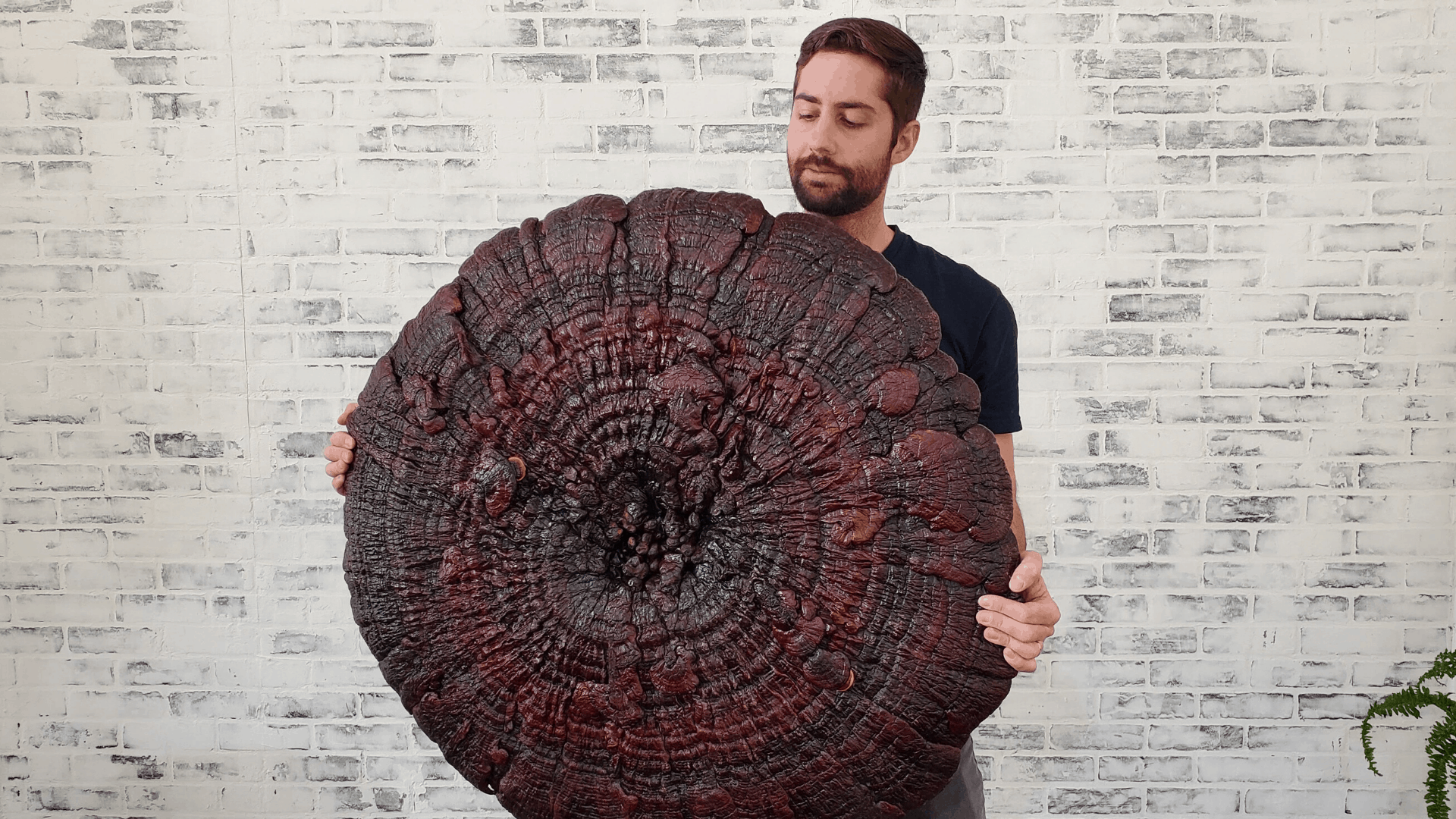
Reishi is one of the most popular and well known medicinal mushrooms in the world.
It has a long history of use, and is typically used by making a tea or tincture. People take Reishi for vitality, immune protection and overall wellness.
When grown for medicinal purposes, Reishi is typically relatively small- maybe the size of a dinner plate. But if done correctly, it is possible to grow them much bigger!
We recently were lucky enough to have acquired one of these giant Reishi.
After posting a pic of it on Instagram, we got so many questions that we decided to put together this article and video to hopefully answer any questions you might have.
1. What is it?
As I mentioned above, this is a large fruiting body of the Reishi mushroom, otherwise known as Ganoderma lucidum.
Reishi is one of the most famous and commonly used medicinal mushrooms in the world, and is thought to have been used for over 2000 years. (1)
Reishi has a tough, woody texture and extractions from this mushroom have an extremely bitter taste.
As you can see, Reishi has a very shiny surface- but that doesn’t mean it has been lacquered or painted.
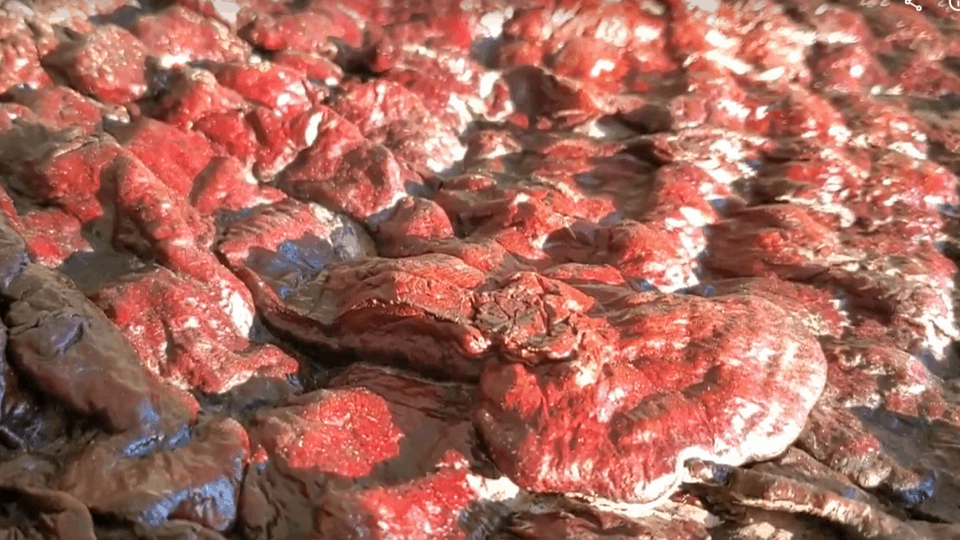
Reishi really is naturally shiny like this. In fact, the name “Ganoderma” comes from the latin words “gano” meaning bright or shiny and “derma” meaning skin.
“Ganoderma” = “Shiny Skin”
In some guidebooks, Reishi is referred to as the “varnished conk”, and if you found true Ganoderma lucidum in the wild, it would be shiny just like this.
Of course, the color and “shininess” of Reishi can vary by species, and not all Ganoderma species have the varnished look. For example, the Ganoderma applanatum, which is common where I am from in Alberta (also known as the Artists Conk) isn’t shiny at all.
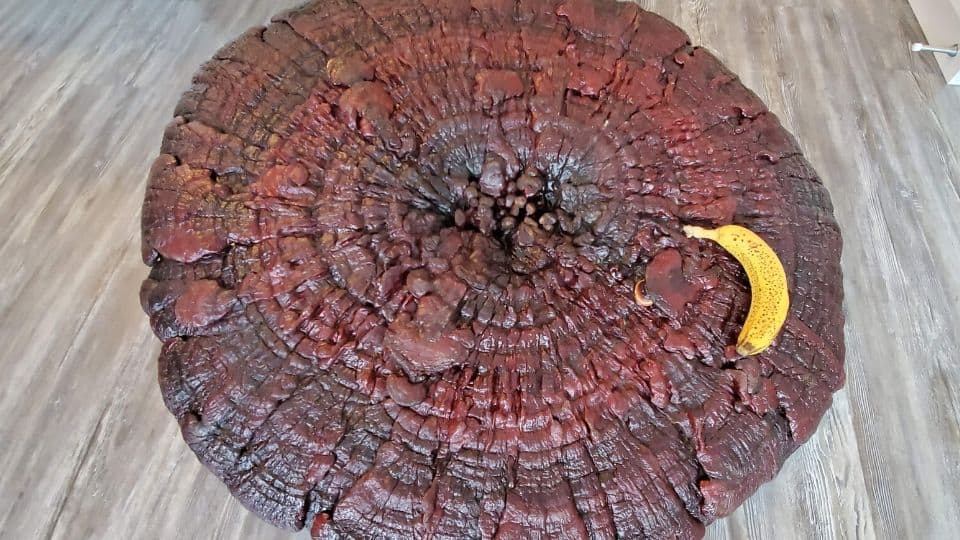
2. How Much Does It Weigh?
This mushroom is huge, and certainly looks heavy.
But since it has been dried, it’s actually pretty light, weighing in at just under 11-½ lbs.
Reishi doesn’t have as much water content as other mushrooms, but fresh, this specimen would likely weigh over 50 lbs.

3. Is it a wild mushroom?
Many people have been asking if this is a wild mushroom- and if so, why did we take it? Why didn’t we just leave it where it was and let nature do its thing?
While it’s true that Reishi does grow in the wild, this particular specimen was cultivated.
I did not grow it myself though- it comes from South East China where Reishi cultivation has a long history. The climate there is warm, humid, and just perfect for growing quality Reishi.
South East China also has the infrastructure, community, and knowledge for Reishi, with lots of small to medium sized family farms that have been in operation for generations.
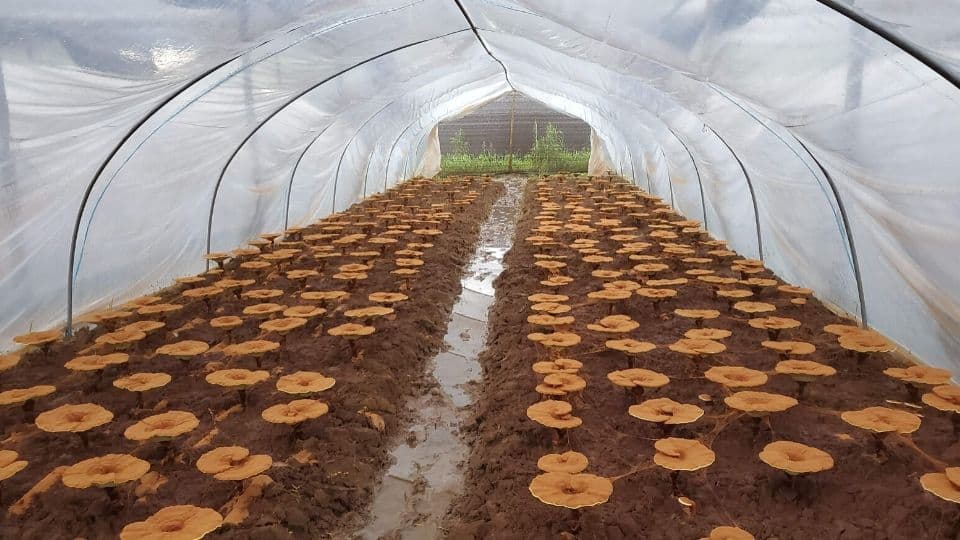
4. How was it grown?
To be honest, I am not sure exactly how these huge specimens are grown and how it differs from standard outdoor reishi cultivation. When I first saw these it was at a market where they sell a variety of dried mushrooms.
Typically, common Reishi is grown on logs, in small greenhouses and shade houses. In some farms, they also collect the spores for medicinal purposes before harvesting the mushrooms when they are about the size of a dinner plate.
Keep in mind, that this Reishi is not technically one large single fruiting body, even though it looks like one. When you look at the bottom, you can see that it is a dozen or so fruiting bodies that are made to grow together.
However it is done, it’s clear that these mushrooms are grown this large on purpose by very experienced farmers.
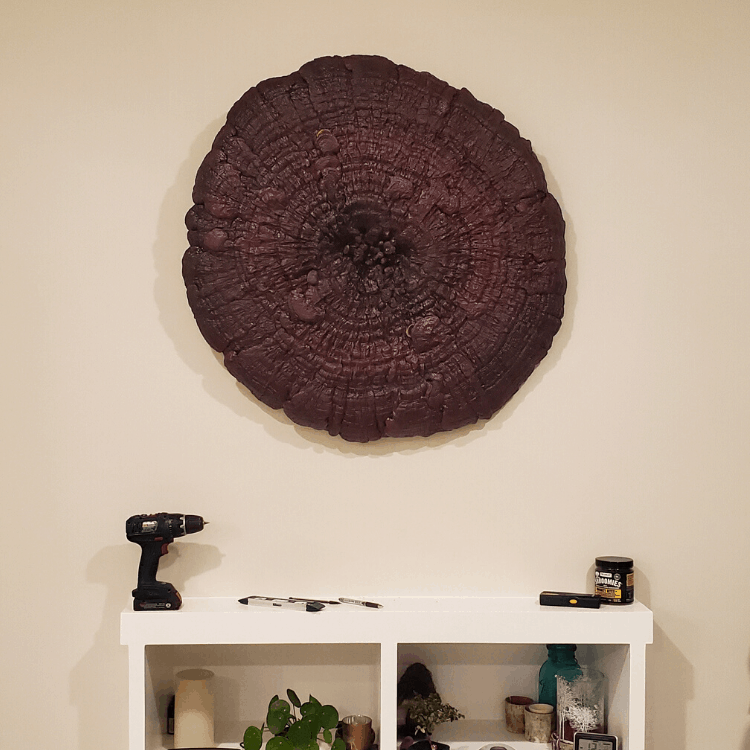
5. What are you going to do with it?
As mentioned above, Reishi is a powerful medicinal mushroom.
The most common thing to do with Reishi is to make a hot water extraction in the form of a tea.
You can also perform alcohol extractions to pull out the non-water soluble compounds.
That being said, this particular Reishi will not be used medicinally. It is too special and I plan to hold on to it forever.
Some people have had some awesome suggestions, like making a table, embedding it in resin, or even adding mechanics and making a clock (which would be super cool!).
Some people also suggested putting it back in the wild- but again, this Reishi was cultivated not wildcrafted, so that would be like throwing it away.
For this Reishi, I am just going to mount it on the wall so I can continue to enjoy it in all its glory! A table or clock would be cool, but I want to keep it as close to its natural look as possible. It’s already perfect as is!
